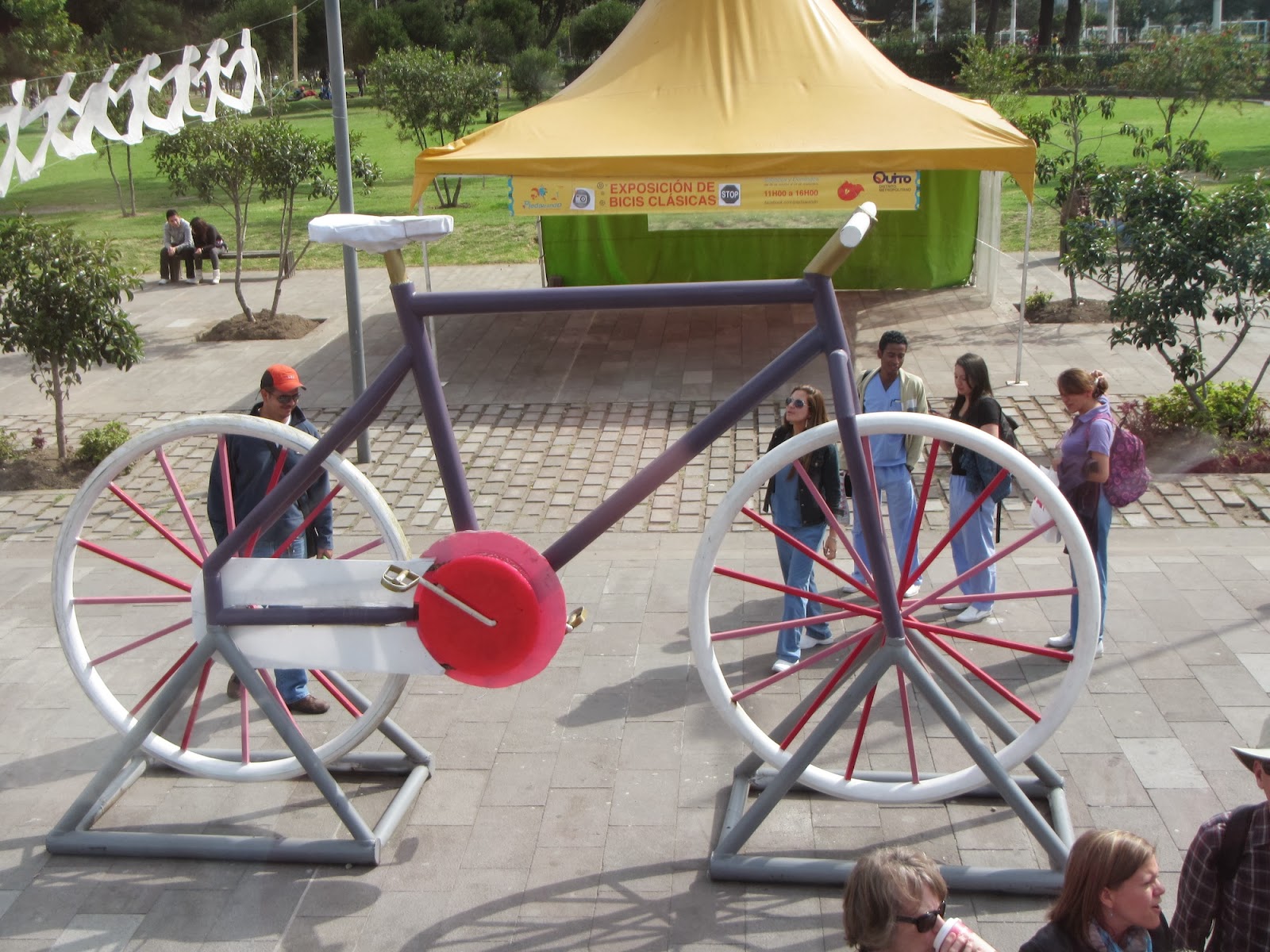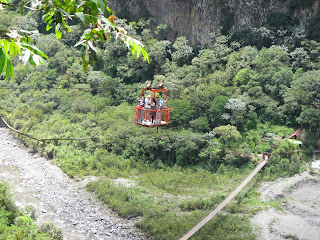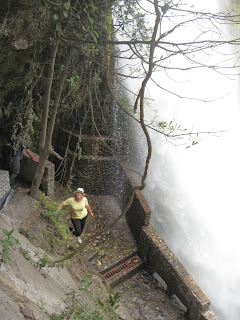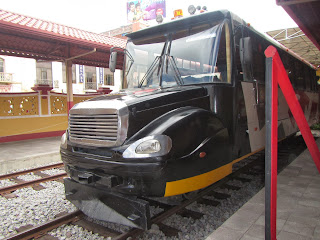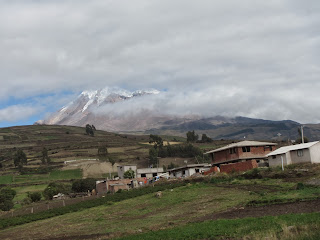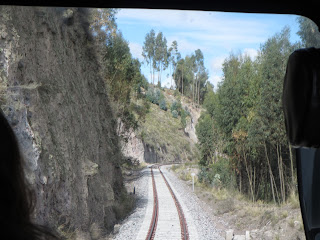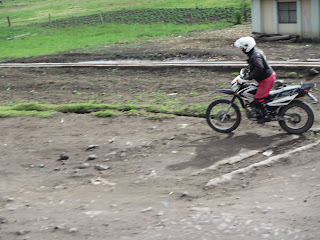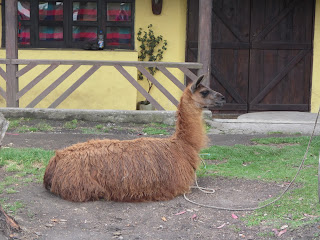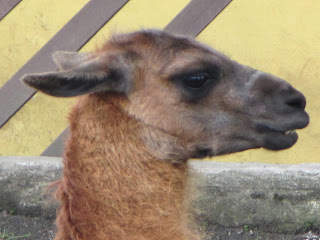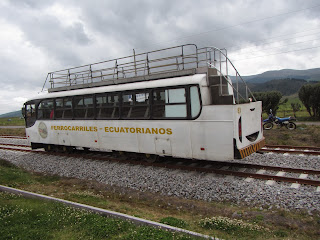Although we only had a couple of days here, we did have a couple of things that we really wanted to see and do: the teleférico and the Center of the Earth. As well, we wanted to discover the "life of the party" part of town. There were supposed to be lots of good restaurants in the area as well.
 The TelefériQo, a gondola-type lift that takes one up to the side of Pinchincha Volcano overlooking Quito, is one of the highest of it's kind in the world.
The TelefériQo, a gondola-type lift that takes one up to the side of Pinchincha Volcano overlooking Quito, is one of the highest of it's kind in the world.  Starting at 10,226 feet, it takes you to up to 12,945 feet (you can imagine our trying to walk up this) sumitting at Cruz Loma, which is definitely still not the top.
Starting at 10,226 feet, it takes you to up to 12,945 feet (you can imagine our trying to walk up this) sumitting at Cruz Loma, which is definitely still not the top.  From the end of the lift, you then hike up to the peak of the mountain which stands at 15,413/15.696 feet, depending on which peak.
From the end of the lift, you then hike up to the peak of the mountain which stands at 15,413/15.696 feet, depending on which peak. The Guagua peak is an active volcano last erupting in 1999 (on the Western slope, while Quito is below the Eastern slope). This volcano is part of the Volcano Avenue, a line of 14 very high peaks/volcanoes along the spine of Ecuador, many of which can be seen far off in the distance on a clear day.
The Guagua peak is an active volcano last erupting in 1999 (on the Western slope, while Quito is below the Eastern slope). This volcano is part of the Volcano Avenue, a line of 14 very high peaks/volcanoes along the spine of Ecuador, many of which can be seen far off in the distance on a clear day. The day we went up was cloudy, very windy and misting.
The day we went up was cloudy, very windy and misting.  From the gondola, the view of the city was a little misty but for the most part clearly visible.
From the gondola, the view of the city was a little misty but for the most part clearly visible.  At the top, walking was slow going in order to not become breathless but the views fantastic. Touted as a full tourist attraction, we were a little disappointed to find most of the stores and kiosks closed and the restaurant not really a restaurant but rather a vending machine type cafeteria.
At the top, walking was slow going in order to not become breathless but the views fantastic. Touted as a full tourist attraction, we were a little disappointed to find most of the stores and kiosks closed and the restaurant not really a restaurant but rather a vending machine type cafeteria.As we had brought a taxi up to the gondola and no taxis stayed waiting, when we got to the bottom, we had two options available to us: Wait in line for a taxi to bring some one up or walk down and try and find public transportation. Opting for the walk down, we eventually got to a bus stop sign. Enquiring of a guard, yes in deed the buses came up but who knows where exactly they went. Luckily for us, a taxi came up and discharged his clients and we were able to flag him down.
The next day being the day before our departure, we took public transportation,
 costing a whole 12 cents each, out to the Middle of the World.
costing a whole 12 cents each, out to the Middle of the World. 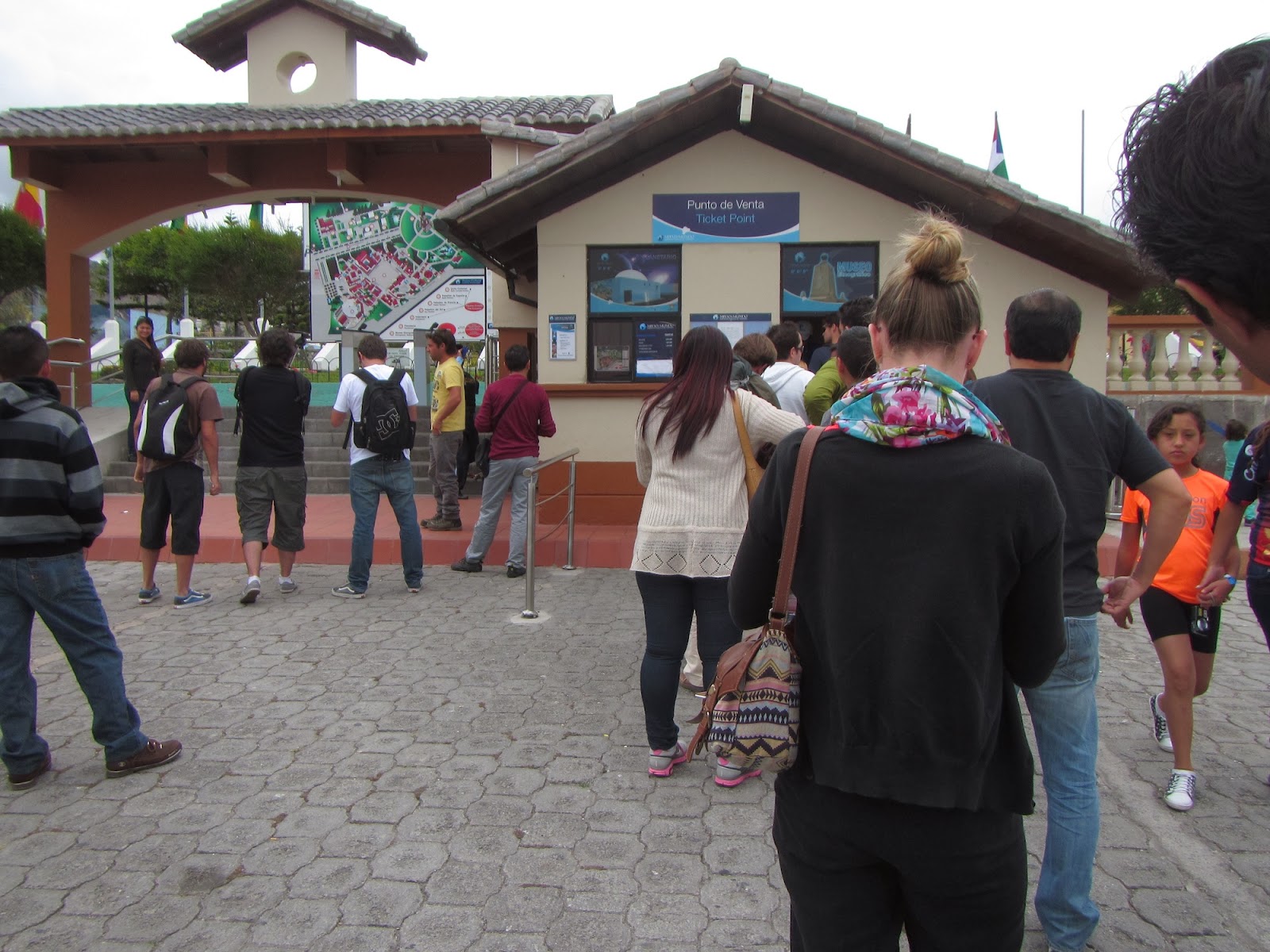 A true Disneyland, a la Ecuador style. No rides, lots of restaurants and even more tourist shops offering the usual objects. The center of our reason for being there was the obelisk marking the true "middle", latitude 0'0'0".
A true Disneyland, a la Ecuador style. No rides, lots of restaurants and even more tourist shops offering the usual objects. The center of our reason for being there was the obelisk marking the true "middle", latitude 0'0'0".  The point was calculated and found by the Frenchman Charles Marie de la Condamine in 1735. Here we straddled the equator,
The point was calculated and found by the Frenchman Charles Marie de la Condamine in 1735. Here we straddled the equator, 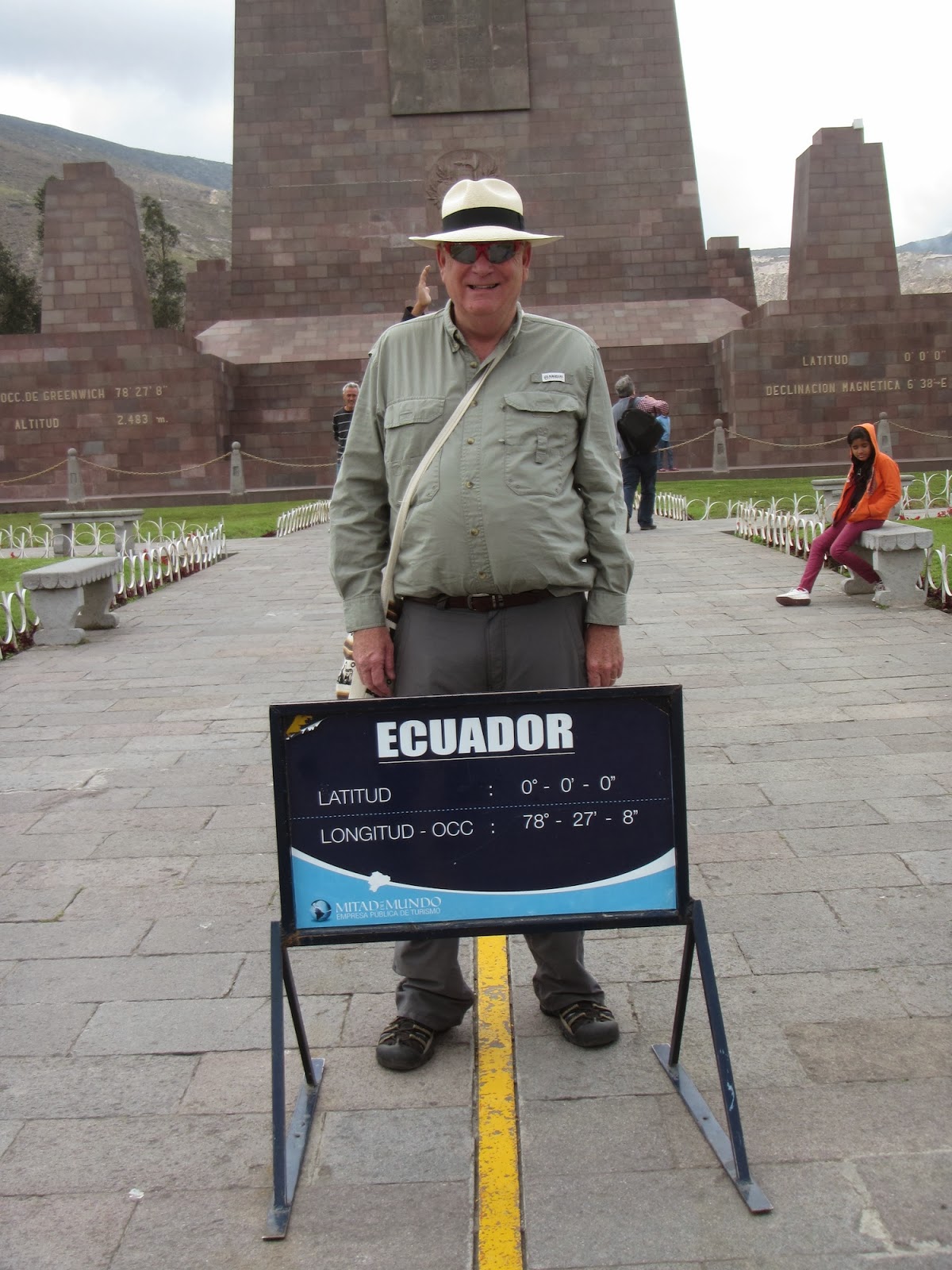 one foot in the northern hemisphere and one in the southern;
one foot in the northern hemisphere and one in the southern;  saw a unique sundial showing the seasons as well as the time; and took the pre-requisite photos. And yet, one discovers that the true "middle" is actually a short distance to the north, running through someone's private establishment.
saw a unique sundial showing the seasons as well as the time; and took the pre-requisite photos. And yet, one discovers that the true "middle" is actually a short distance to the north, running through someone's private establishment. In the main building at the bottom or start, which ever way that you look at it, there was an art display showing active production of the hummingbird statues that we had seen in other communities.
We enquired and found out that it was not a competition but rather a public beautification service, with time and effort donated by various local artists. The artist
 that we received this information from is actually scheduled to have showing in Austin in the early months of 2017. The ideas being presented were all a matter of interpretation and, as usual, some attracted and some had no call at all to me. All in all only a short visit was necessary to "see and do it all".
that we received this information from is actually scheduled to have showing in Austin in the early months of 2017. The ideas being presented were all a matter of interpretation and, as usual, some attracted and some had no call at all to me. All in all only a short visit was necessary to "see and do it all".In between our site-seeing we also explored Quito, starting out with our usual double decker bus tour.
In exploring the cathedral,
we were able to go up into the bowels of the roof buttresses, something never done before. Designed somewhat along the lines of Notre Dame, but finished just in time for the Pope's visit in 1985 over 100 years later, it was dizzying experience.

Exploring the restaurant area we came across a true Mexican restaurant, TexMex that is.
Taking a chance, we ended up with a very tasty meal and pleasant conversation with a lady traveling solo.
The next day we headed to Spain, the next leg of our journey for the fall of 2013 ...





